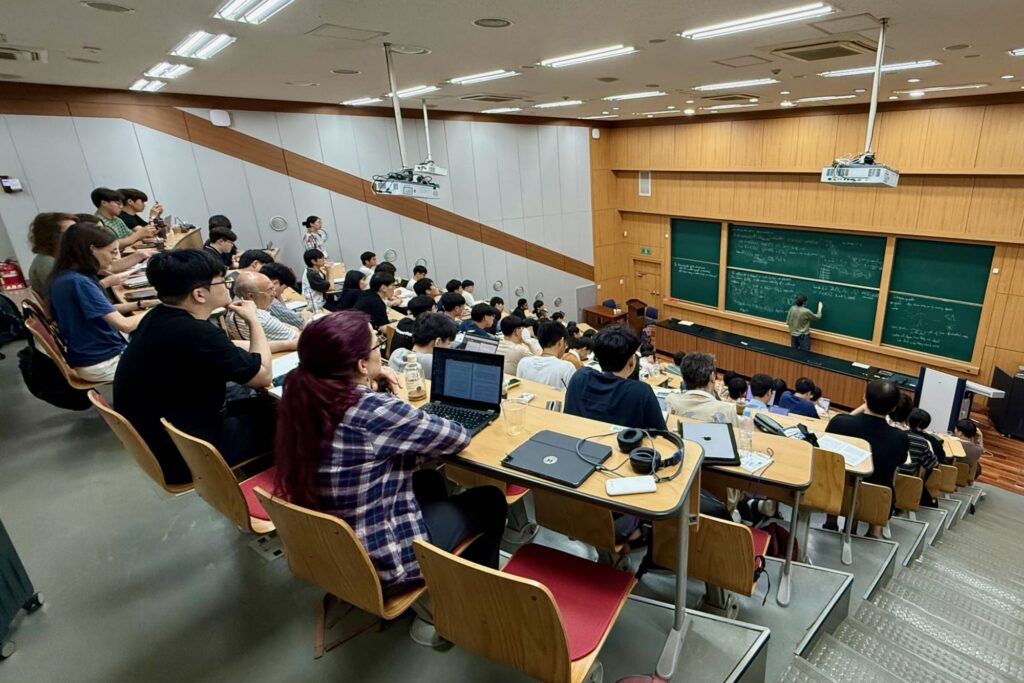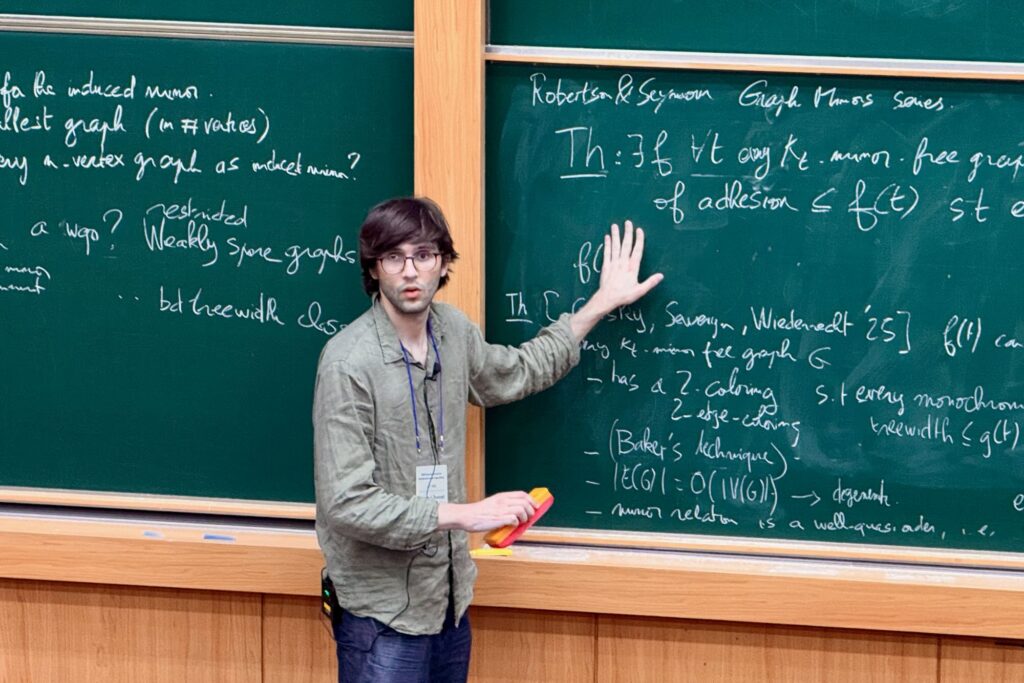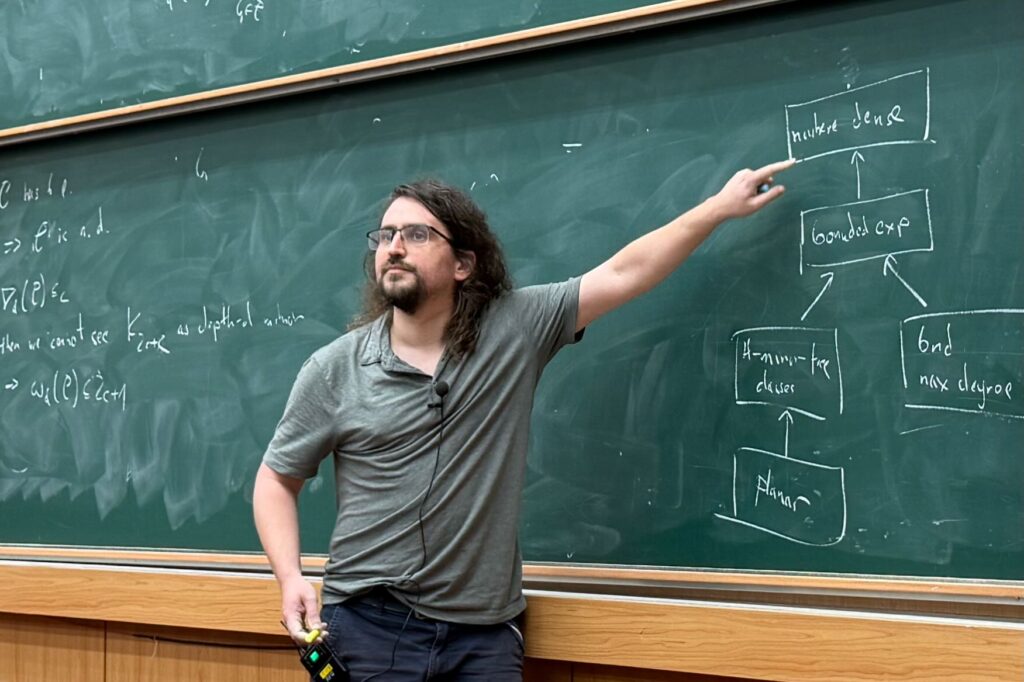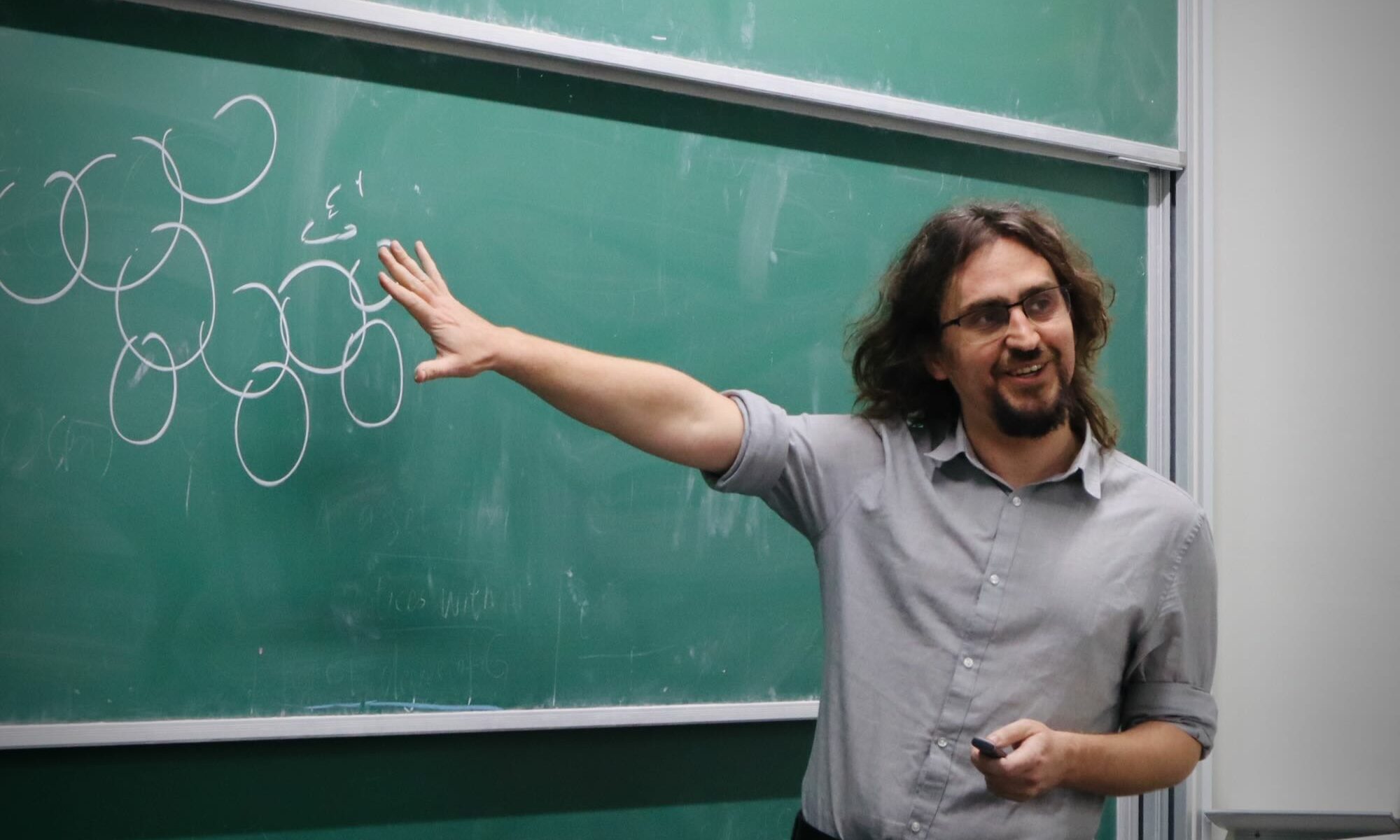On November 5, 2024, Michał Pilipczuk from the University of Warsaw gave a talk on the structural theory of graphs in terms of first-order transductions at the Discrete Math Seminar. The title of his talk was “Monadic stability and monadic dependence“.
(Due to the technical issues, the video was not properly recorded.)
We will give an overview of the recent attempts of building a structure theory for graphs centered around First-Order transductions: a notion of containment inspired by finite model theory. Particularly, we will speak about the notions of monadic dependence and monadic stability, their combinatorial characterizations, and the developments on the algorithmic front.
On April 7, 2021, Michał Pilipczuk from the University of Warsaw gave an online talk at the Virtual Discrete Math Colloquium on the structural properties of powers of graphs in a fixed class of of graphs of bounded expansion or a fixed nowhere-dense class of graphs. The title of his talk was “Structural properties of powers of sparse graphs“.
For a graph G and an integer d, the dth power of G is the graph $G^d$ on the same vertex set as G where two vertices are considered adjacent if and only if they are at distance at most d in G. Assuming that G is sparse, what can we say about the structure in $G^d$? Certainly $G^d$ can be dense, as the square of a star is a complete graph, but $G^d$ still retains many properties that can be derived from the sparsity of G. We will present some recent results in this spirit, in particular connected to colorings and to the Erdős-Hajnal property, assuming that G is drawn from a fixed class of bounded expansion or from a fixed nowhere dense class. The talk will be based on the recent papers: “Clustering Powers of Sparse Graphs” (with J. Nešetřil, P. Ossona de Mendez, and X. Zhu) and “Erdős-Hajnal properties for powers of sparse graphs” (with M. Briański, P. Micek, and M. Seweryn).







